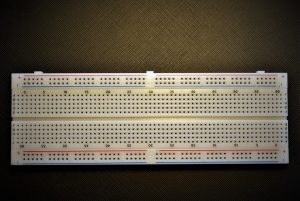Plasmonic Computing: Light-Metal Processing
Plasmonic computing is revolutionizing the world of data processing and storage. Using light-based technology and metal nanoparticles, plasmonic computing has the potential to surpass the limitations of traditional computing methods. By using light instead of electricity, plasmonic computing could provide faster and more energy-efficient processing, making it a game changer in the tech industry.
The Basics of Plasmonic Computing
Plasmonic computing is based on a phenomenon called plasmonics, which refers to the interaction between light and metal nanoparticles. Metal nanoparticles, when exposed to light, can create plasmons – electron oscillations on their surface. These plasmons can then be used to process and store information, similar to how traditional computers use electrons.
One of the main advantages of plasmonic computing is the speed at which information can be processed. Unlike traditional computing methods that rely on the flow of electrons, plasmonic computing uses light, which travels much faster. This could potentially lead to processing speeds that are thousands of times faster than what is currently possible.
The Potential of Light-Metal Processing
One of the key components of plasmonic computing is the use of metal nanoparticles, which are able to trap and manipulate light. These nanoparticles are typically made of materials such as gold, silver, or copper, which have properties that make them ideal for plasmonic processing.
One of the most intriguing possibilities of plasmonic computing is the potential for efficient data storage. As traditional computing methods continue to struggle with the ever-increasing amount of data being generated, plasmonic computing could provide a solution. By using light to store data, plasmonic computing could greatly increase the capacity and speed of data storage.
The Impact on the Tech Industry
The impact of plasmonic computing on the tech industry could be significant. As the demand for faster, more efficient computing continues to grow, plasmonic computing could provide a solution that is not only faster, but also more energy efficient. This could have a significant impact on reducing the carbon footprint of the tech industry, which is a major concern in today’s world.
Plasmonic computing also has the potential to open up new possibilities in areas such as artificial intelligence and machine learning. The speed and efficiency of plasmonic computing could greatly improve the capabilities of these technologies, allowing for more advanced and complex processing.
The Challenges Ahead
While the potential of plasmonic computing is great, there are still challenges that need to be addressed before it can become a mainstream technology. One of the main challenges is the cost of production. Currently, the materials and processes used to create metal nanoparticles for plasmonic computing can be expensive, making it difficult to scale up for commercial use.
Additionally, the integration of plasmonic computing into existing technology and infrastructure also presents a challenge. The infrastructure for traditional computing has been established for decades, and it may take time and resources to integrate plasmonic computing into this existing framework.
The Future of Plasmonic Computing
Despite these challenges, the future of plasmonic computing looks promising. Researchers and companies around the world are actively working to improve the technology and bring it to commercial use. In fact, some companies have already started experimenting with plasmonic computing in various applications, showcasing its potential.
As our need for faster and more efficient data processing and storage continues to grow, plasmonic computing could be the answer. With its unique use of light and metal nanoparticles, this technology has the potential to transform the tech industry and pave the way for a more advanced and sustainable future.









